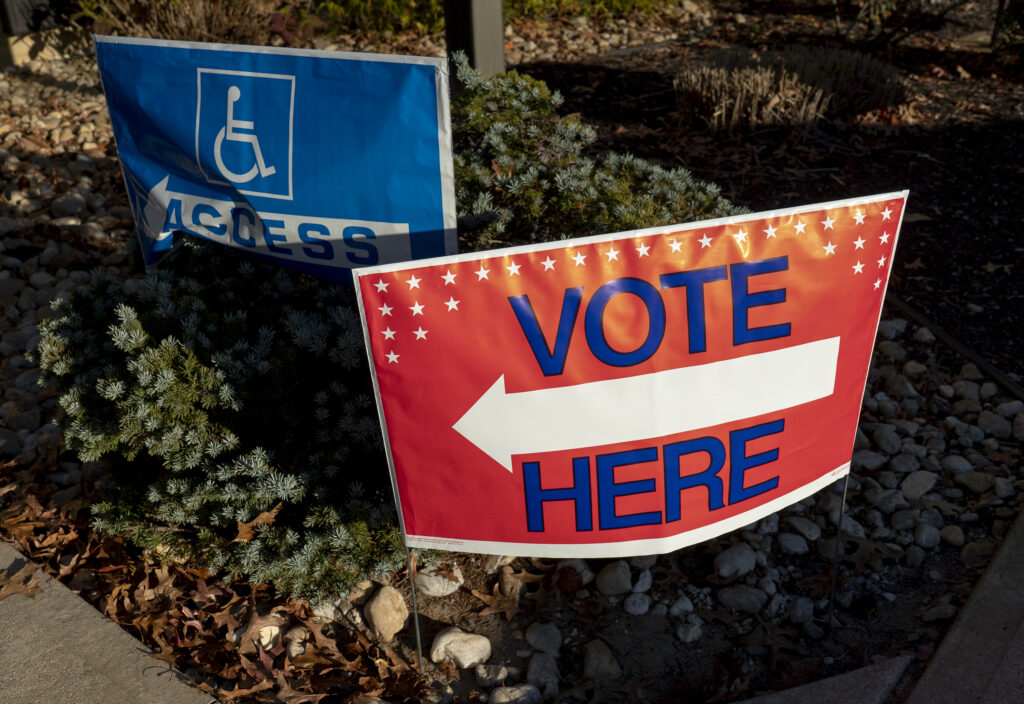The 3rd District, redrawn to be much more favorable to Democrats, has drawn little attention or funds despite an open seat. Rep. Andy Kim, who represents it in Congress, is seeking a U.S. Senate seat this year. (Daniella Heminghaus for New Jersey Monitor)
New Jersey Republicans face a narrow path to victory in the 3rd Congressional District after a new map and a decade of surging registrations leave Democrats with a steep advantage in party affiliation.
Two physicians — Assemblyman Herb Conaway (D-Burlington) and Republican cardiologist Rajesh Mohan — are the front-runners competing for a House seat in this Burlington County-centered district, which has seen partisan control shift more often than in any other New Jersey congressional district over the past two decades. But new boundary lines created in 2021 have made it friendlier terrain for Democrats.
“The redistricting commission was trying very hard to make this a safe Democratic district, and they did a heck of a job doing that. This district was a Republican-leaning district. Now it is very much a Democratic-leaning district,” said Dan Cassino, executive director for the Fairleigh Dickinson University Poll.
The 3rd District has changed hands four times in the last 20 years. Democrat John Adler was elected in 2008 after eight-term Republican Rep. Jim Saxton retired. Adler served only a single term before being defeated by Republican Jon Runyan, who retired after two terms and was succeeded by Tom MacArthur, another Republican.
Rep. Andy Kim, a Democrat, ousted MacArthur in 2018 and has held the seat ever since. Kim is foregoing reelection this year to mount a campaign for the U.S. Senate.
Assemblyman Herb Conaway (D-Burlington) is seeking to replace Rep. Andy Kim as the 3rd District’s representative in Congress. (Hal Brown for New Jersey Monitor)
Reapportionment left Democrats in the 3rd District with a far broader voter registration advantage than they had at any time in the prior decade.
The new lines saw the district shed heavily Republican Ocean County towns and gain equally Democratic portions of Mercer County, as well as politically mixed towns in Monmouth County.
In March 2022 — the last batch of voter registration statistics issued using old district lines — there were just 10,336 more Democrats than Republicans. The next month, the New Jersey Department of State reported Democrats’ registration advantage had ballooned to 62,748 under the new map.
“It wouldn’t necessarily be surprising that this was not the district where people are focused, even though it’s technically an open seat,” said Ben Dworkin, director of Rowan University’s Institute for Public Policy and Citizenship.
That lack of focus is reflected in the candidates’ relatively anemic fundraising. Through the end of June, Conaway had raised only $748,301, while Mohan brought in $381,790 by Sept. 30.
By comparison, major party nominees in the 7th District — the most closely watched House race in the state, and one that has sparked national interest as well — had raised nearly $7.3 million combined by the end of June.
The financial disparity alone is enough to tell you that neither party sees the 3rd District as a competitive race, Cassino said.
“When you’ve got a competitive race, you start seeing national money come in, especially when Congress is this closely divided,” Cassino said.
Democrats’ registration advantage in the 3rd District has winnowed some in the 30 months since new lines went into effect, falling to 56,462 at the start of October, but the difference remains stark. On Oct. 1, the district had 219,977 Democrats registered versus 163,515 Republicans.
The advantage is so broad that Democrats may have hamstrung themselves elsewhere in the state by making the district so Democratic, Cassino said, particularly in the competitive and Republican-leaning 7th District. In the 7th, GOP Rep. Tom Kean Jr. is facing a challenge from Democrat Sue Altman.
“It looks like they actually overshot their targets a little bit. They didn’t have to move these districts quite so much. If they hadn’t, maybe Sue Altman would be having an easier time trying to get Democrats in her race,” he said.
Rajesh Mohan is hoping to flip the 3rd District seat back to GOP control. (Courtesy of the Mohan campaign)
Though redistricting caused a surge in Democratic registrations and a drop in the number of registered Republicans, the number of unaffiliated voters in the 3rd District remained largely static.
Historically, the high number of unaffiliated voters in the 3rd District contributed to its competitiveness, particularly in races run a decade or more ago, but experts noted few unaffiliated voters are, in fact, independent.
“Unaffiliated voters are simply voters who have never registered with one party or the other. That does not mean that they don’t identify as Democrats or Republicans,” Dworkin said. “We can tell from past turnout and past election results where they likely lean.”
MacArthur, the last Republican to win the district, was reelected amid a nationwide GOP surge in 2016, but he was buoyed by unaffiliated voters that broke heavily in his direction, receiving 54,310 more votes than there were Republicans in the 3rd.
It’s unclear how the district’s 223,113 unaffiliated voters will break in November, but there’s little reason to expect they’ll swing the election.
Many of those voters align with either party but forego partisan registrations because of a lack of competitive primaries and the social benefits of an independent label, Cassino said, adding others are simply too disengaged to vote.
“If you’re a true independent, it’s like being a baseball fan — if you don’t have a favorite team, why are you watching the game?” Cassino said.
3rd District House candidates
Herb Conaway (D)
Rajesh Mohan (R)
Justin R. Barbera (Join the Revolution)
Chris Russomanno (Libertarian)
Steven Welzer (Green)
Douglas Anthony Wynn (Why Not Wynn)
YOU MAKE OUR WORK POSSIBLE.

